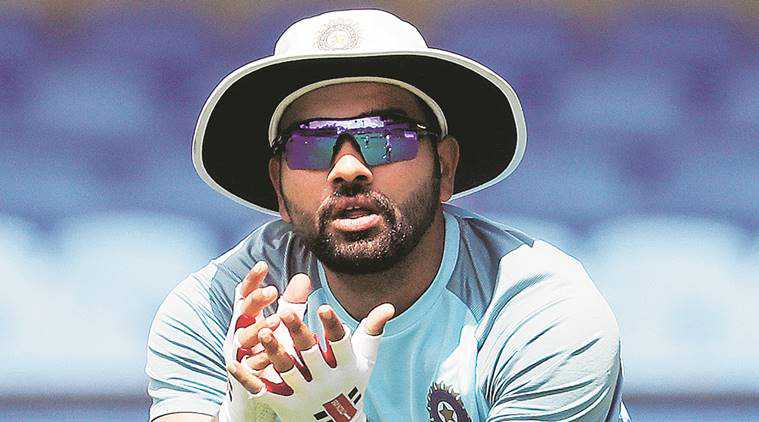India vs South Africa, 1st ODI: India, a different beast in ODI blues
01 February, 2018

That ODIs unshackle Indian batsmen — home or away — is best exemplified by Rohit Sharma. While a straggler in Test cricket, he is already a limited-overs great.
The Wankhede scoreboard read: South Africa 438 for four, India 224 all out; South Africa won by 214 runs. After the match, Ravi Shastri, then the Indian team director, sought out curator Sudhir Naik and launched a broadside. The two teams had gone to Mumbai with the 2015 five-match ODI series tied at 2-2. The defeat at Wankhede saw India concede yet another limited-overs series to the Saffers.
Somehow, India have failed to crack the South Africa code in limited-overs cricket —bilateral limited-overs cricket to be precise. India’s last bilateral series win in this contest came in 2009-10. And like Tests, India haven’t won an ODI series in South Africa yet. The six-match series starting on Thursday in Durban arrives against this backdrop, although India will carry the feel-good factor of winning the third Test on a treacherous Wanderers pitch.
Just one point separates India and South Africa in the ICC ODI rankings at the moment. The Proteas sit atop the table with 120 rating points, while India breath down their neck on 119 rating points. The Virat Kohli-led side can usurp their hosts if they win the series 4-2 or better.
No pushovers
India will feel they have a chance. Unlike the Test series, where the Indian batting carried the dubious ‘pushover’ distinction on fast and bouncy pitches — they did very little to dispel the doubts in the first two Tests before showing real gumption in the third — white-ball cricket unshackles the majority of the batters in the team, mindset-wise. Rohit Sharma is perhaps the biggest case in point. The Mumbai batsman has proved to be a Test failure outside Asia. But he is a different beast in limited-overs cricket. In 174 ODIs, Rohit has scored 6,424 runs including three double hundreds. Away from home, he has scored 2,502 runs and six hundreds in 83 ODIs. So his overseas performance in the shorter form is commendable despite being a notch below his home record.
Shikhar Dhawan is another player who has struggled in Tests in seaming conditions, but did well in one-dayers (overseas games included), with 4,038 runs and 12 centuries in 96 matches. Dhawan and Rohit will once again be the first-choice openers in South Africa followed by Kohli at No. 3.
Rahane at No. 4?
The No. 4 spot still looks unsettled, about a year-and-a-half in the lead-up to the World Cup. Over the past one year or so, India have tried several players in that position without much success. The Yuvraj Singh retake didn’t work; Manish Pandey has flirted with consistency; KL Rahul couldn’t establish himself; and Shreyas Iyer is a spring chicken at this level. MS Dhoni is there, in form and pretty capable of occupying the place. But the former captain prefers No. 5 or No. 6. So it could be over to Ajinkya Rahane again in challenging conditions, especially after his bold 48 in the second innings at Wanderers last week. The ODI pitches are likely to be benign compared to what the Tests had thrown up. But the movement and carry are the basic characteristics of almost all South African surfaces, which can’t be eliminated.
Kohli indicated as much at the pre-match press conference. “We have explored many options in the past few months. We don’t have too much time left before the World Cup. We just have only a handful of series before the World Cup, and not too many matches left. So we want to explore our options further.
“I had said earlier that Ajinkya would be considered as the third opener, but that situation can change. He batted at No. 4 in the previous World Cup. And here in these conditions, you will have to face fast bowling throughout the innings. So Ajinkya becomes a strong candidate to play at No. 4. We have Manish and Shreyas. Kedar (Jadhav) is a No. 5 or No. 6 player. Hardik (Pandya) will bat down the order and of course we have MS (Dhoni),” the skipper said.
Kohli spoke about not being “one-dimensional” in his/team’s approach and thought process, picking horses for courses instead. As he mentioned, save the No. 4 and No. 5 slots, India’s core for the World Cup is more or less sorted. Rahane at the moment appears to be the team management’s best bet to offer middle-order stability.
He has done well in ODIs in the last one year, whenever he got an opportunity. He made 336 runs, including a hundred, in five matches in the West Indies in June-July last year, taking the Man of the Series award. This six-match series might provide him with the chance to cement his place, with an eye on the World Cup.
Coming back to the Wankhede game a little over two years ago, Rahane was India’s only shining light in batting as he scored 87 off 58 balls. Three South African hundreds, however, had dwarfed his effort. Quinton de Kock and Faf du Plessis had reached three figures, but AB de Villiers’s 119 came off 61 balls and included 11 sixes. Bhuvneshwar Kumar had conceded 106 runs in 10 overs and temporarily lost his place in the Indian team.
A lot has changed since. Kumar is now the team’s pace bowling spearhead. Shastri has returned to the fold as head coach. But more importantly, de Villiers has been ruled out of the first three ODIs here with a finger injury. De Kock hasn’t scored a half-century in his last 10 competitive matches, domestic and international combined. India sense an opportunity.
TAG(s):
